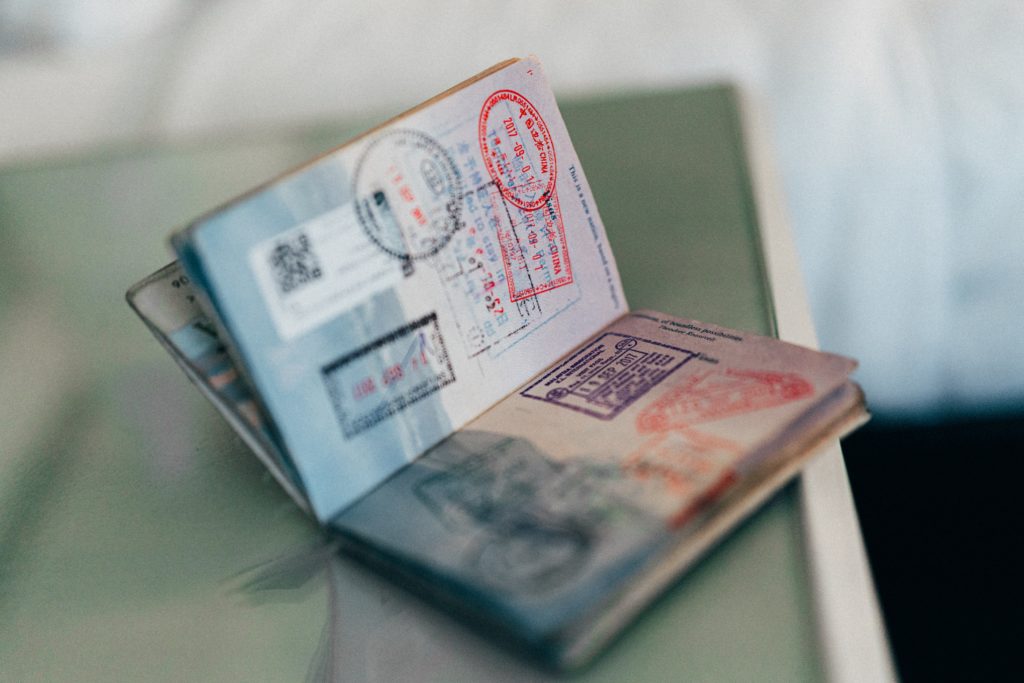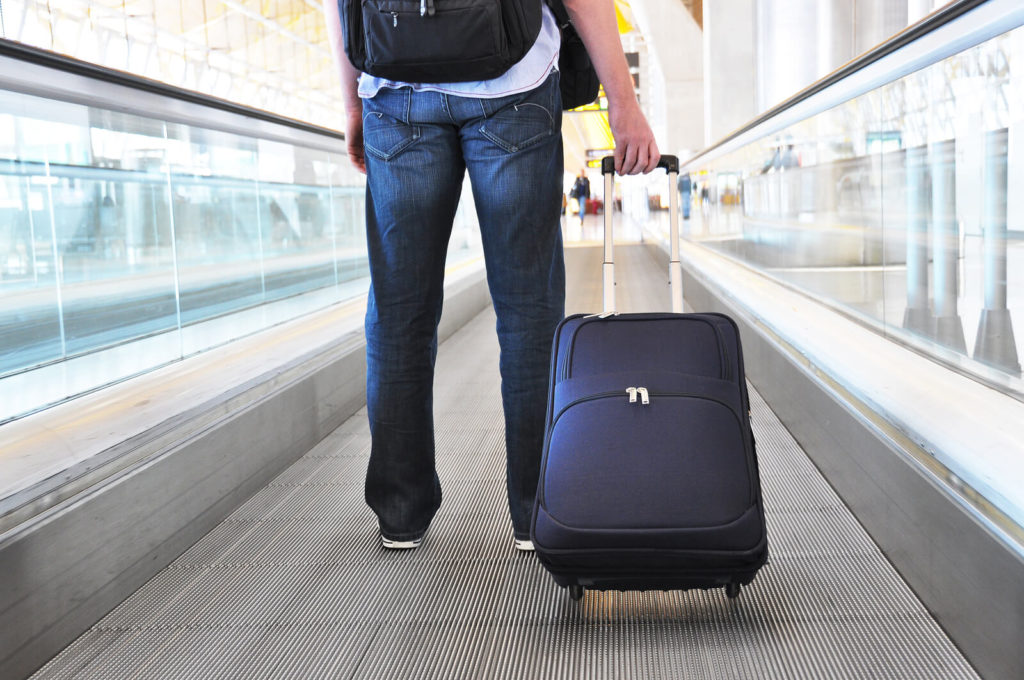You’ve been planning your trip for months. Meticulously finding the best prices for airfare, hotels, and transportation. Whether it’s an important work meeting or a fun get-away, it’s been on your mind for a long time.
You pack, get a ride to the airport, and go through security only to find out that you have the wrong travel documents. Or worse, you forgot your travel documents entirely!
Suddenly your entire trip gets derailed. You miss the big meeting or romantic vacation. And you lose out on a lot of money.
But it doesn’t have to be that way. In this article we’re going to discuss travel document tips, including what travel documents you need to travel overseas, internationally and within the United States.
And that’s not all. We’re also going to tell you exactly what important travel documents you need to visit the ten most frequently visited countries in the world from France to Australia.
By the end of this article, you’re going to know:
- What travel documents are.
- Why travel documents are so important.
- What travel documents you need for domestic travel.
- How to apply for travel documents.
- What to do if you lose your important travel documents at home or abroad.
- How much travel documents cost.
- And so much more.
Let’s get started by defining what travel documents are and why they are so important.
What are travel documents?

According to Wikipedia, “A travel document is an identity document issued by a government or international treaty organization to facilitate the movement of individuals or small groups of people across international boundaries, following international agreements.”
Travel documents let other country’s governments know that the holder is authorized to return to their home country, is in good legal standing, and can travel.
The most common travel document is the passport. A passport is a 3.5” x 5” booklet which declares the holder’s home country and displays the holder’s name, place and date of birth, photograph, signature, and other relevant identifying information. The first page also contains an electronic chip with this information, a biometric identifier of your photo, a chip ID, and a digital signature. The rest of the 28 or 52 pages are blank for immigration stamps and visas. The passport booklet can be used for all entry methods (air, land or sea) and is the only document approved for international air travel.
In addition to the passport booklet, some countries including the United States, Canada, Mexico, and the Caribbean also issue passport cards. A passport card is a wallet sized travel document which can be used to enter the U.S. and land border crossings and seaports of entry. It is also accepted for entry by land or sea into Canada, Mexico, Bermuda and certain countries in the Caribbean.
A passport card can be used as an identity card for domestic air travel, but it cannot be used for international air travel. However, it can be helpful to carry a passport card with you while you are overseas. Many countries require you to always keep your passport with you, but a passport book is too large to fit in an average wallet. Carrying a passport booklet with you would increase your risk of losing it, damaging it, or having it stolen. A passport card fits in an average wallet, and it allows you to keep your passport booklet safely locked away for the time when you’re ready to leave the country.
In addition to your passport when traveling internationally, you might also need a travel visa.
What is a travel visa?
A travel visa is a conditional authorization from the country you want to visit, allowing you to visit for a certain period or to perform a certain activity.
For example, if you were traveling internationally to go work for a company based in a foreign country you might need to apply for a work visa, depending on the length of your stay. Or if you were taking a fun trip through the Australian outback, you would need a tourist visa explaining how long you were going to be in Australia and the purpose of your trip.
Although many countries allow American citizens to apply for visas on the ground, make sure to check to see if you need a visa before planning any international trips.
Why are travel documents important?
Travel documents are important because they allow you to both enter a foreign country and more importantly re-enter your home country. Without the proper travel documents, you will end up not being able to leave your home country, or even worse, you could be trapped in another country until you can get replacement documents.
Travel documents can also come in handy in other situations such as staying in hotels or other times when you may need to show ID.
If you are reading this article, and currently have lost your important travel documents, keep reading because we’re going to tell you what to do if you lose your travel documents in just a few sections.
Now that you know what travel documents are and why they are important, let’s move on to the types of travel documents you will need for different trips. Starting with domestic travel within the United States.
What documents do you need for domestic travel within the United States?
In this section we will review the travel documents you need to travel within the United States, as a US citizen and as a foreign visitor.
As a US citizen, all you need to travel domestically is a valid form of Government ID. Most commonly this will be a driver’s license. A Driver’s License is an official government document issued by the state in which the holder lives that grants them the right to operate a motorized vehicle such as a car, motorcycle, or scooter.
If you are a US citizen traveling domestically who does not have a driver’s license, either because you do not drive or because you are under the age of 16, a state issued ID card can be used in the place of a driver’s license if it is valid.
You can also use your Passport or a Passport card to travel through the United States as a US citizen. If you are a foreign visitor traveling domestically through the United States, you will need to always have your passport. The United States does not require a visa to visit unless you are planning to become a permanent resident or register as a foreign national or refugee.
If you want to drive while visiting the United States, you may do so with a foreign driver’s license in 49 of the 50 states. Georgia requires foreign visitors who wish to drive acquire an International Driving Permit. Now that you know what travel documents you need for domestic travel, let’s look at what travel documents you need for international travel.
What documents do you need for international travel?

When traveling internationally the important travel documents you need will vary from country to country.
One travel document you will always need is your passport. Whether card or booklet, your passport is the most important travel document you have when you travel internationally.
As a United States citizen traveling internationally, you can only use your passport card when traveling to the following countries:
- Canada
- Mexico
- The Caribbean
- Bermuda
If you are traveling to any other country, you must use your passport booklet.
While the US passport is no longer the most powerful travel document in the world, you can still access a whopping 174 countries without a visa! And to make things even easier, American citizens can apply for an on-arrival visa in places like Indonesia, Bahrain, Cambodia, Djibouti, and Ethiopia.
Chances are you won’t need a visa unless you are traveling somewhere like Russia, but you should still check before making any travel plans. After all you don’t want to end up having to get back on a plane after 14 hours simply because you didn’t do an Internet search for “Do I need a visa to go to Australia?”
Other possible travel documents include medical prescriptions for medications and an international driving permit if you plan to drive while overseas.
Now that you know what important travel documents you need to travel domestic and international, let’s look at how much travel documents cost.
How much do travel documents cost?

In this section we will look at how much travel documents like passports, passport cards, driver’s licenses, and visas cost.
Let’s start by looking at passports. As you’ve already learned, there are 2 types of passports:
- Passport booklets.
- Passport Cards
Now let’s see how much it costs to apply for and replace each of these types of passports in 2023:
To apply for a US passport for the first time if you are at least 16 years old costs $165. That $165 is broken up into a $130 application fee and a $35 acceptance fee. If your passport is not granted you will only be charged the application fee.
To renew a US passport costs $130.
To replace a US passport costs the full $165 that a first-time passport costs.
You can pay extra to expedite service or have your passport shipped back using overnight shipping. Additionally there are services to rush a replacement passport in as little as 48 hours which cost significantly more.
A passport card for a first-time applicant who is over 16 years of age costs $65. A $30 application fee and a $35 acceptance fee.
It costs just $30 to renew a US passport card. To replace a passport card costs the full $65.
If you apply for a passport book and card at the same time (adult or minor), you only pay one acceptance fee, so it costs $35 less than applying for them separately.
If you are applying for a passport for someone under 16 the costs are reduced. The cost for a passport for a minor under 16 years of age is $135 for a booklet or $50 for a passport card.
For those of you reading this outside of the United States, check your local government’s website for passport fees.
Now that you know how much a passport, and passport card cost, let’s look at the application process.
How do you apply for travel documents?
In this section we will look at how to apply for a passport book or passport card.
You will not learn how to apply for a driver’s license because those rules vary from state to state. For updated information on how to obtain a driver’s license go to your state’s motor vehicles department website or visit the DMV in person.
To apply for a passport, you will need to complete the following steps:
Step 1: Gather all the necessary documents. To apply for a passport you will need to first print then fill out a DS-11 Passport form. Next you will need to gather evidence of US citizenship, proof of identity and a recent color photo. Be sure to include a photocopy of the front and back of both your citizenship and identity documents. These photos can be taken everywhere from your local post office to CVS. To find a place near you simply do a Google search for the term “passport photos near me.” Finally, you will need to include a check for the necessary fees mentioned earlier in this article.
Step 2: Send the package through the US Post Office (USPS). Did you know that the USPS has a special service just for handling passport applications? Go to the USPS website then find the nearest location that handles passports. Be aware the post office only handles passport services during certain hours. Be sure to get any necessary tracking and insurance on your package at the time of sending it.
Step 3: Wait. While you can pay $60 to expedite service and an additional $17.13 for overnight return service, the average processing time for a passport is 4-6 weeks. Be sure to account for the processing time when applying for your passport. You don’t want to apply for a passport for a trip you planned in 3 weeks only to not get your passport in time to go.
The steps for applying for a passport card are the same.
You now know how to apply for a passport but what happens if you lose your passport, or it expires?
What do you do if you lose your travel documents?

In this section we will look at what to do if you lost your important travel documents both at home and in a foreign country.
What do you do if you lose your important travel documents at home?
Losing your passport, driver’s license or passport card at home is less serious than losing them in a foreign country, but you’ll still want to replace those documents as quickly as possible.
To replace a lost driver’s license, contact your local department of motor vehicles. The process to replace a lost driver’s license varies from state to state with some states allowing you to fill out a form online while others require you to make a trip down to the DMV office.
Before replacing a lost passport, you must first report it lost or missing. You can do so on this website or you can fill out a DS-64 form and mail it to the address on the form.
Once you have reported your passport lost or stolen you must again fill out a DS-11 form but this time you must submit it in person. Where you submit the DS-11 depends on how soon you are traveling. If you are traveling in 3 weeks or less, you must submit it to a passport agency or center. If you are traveling in more than 3 weeks, you must submit it to a passport acceptance facility. The same process applies for replacing a lost or stolen passport card.
How do you replace your travel documents in a foreign country?
If you lose your important travel documents while traveling internationally the situation is a bit more serious.
You may not be able to replace your driver’s license while in a foreign country. But if you have a secondary form of ID like a passport, you should still be able to board your flight and return home.
Losing your passport while traveling overseas is a much bigger deal. If you lose your passport while traveling internationally you will need to replace it before you attempt to return to your home country. This means you will probably need to find a place to stay for anywhere from a few days to a few weeks.
To replace your passport internationally you will need to contact the American Embassy to report your passport as lost or stolen. The Consular Section of the US Embassy will work with you to replace your passport.
Be aware that you will most likely need to get new passport photos taken before contacting the Embassy.
Can you travel without travel documents?

The simple answer is no. But what you may not know is that it is up to the discretion of the receiving country as to whether to accept travelers without travel documents.
Only refugees can be registered at the border so if you are not fleeing from persecution or danger, you better have your travel documents ready! Now that you know why it’s a bad idea to lose your important travel documents, let’s look at what travel documents you need to visit the most frequently visited countries on Earth.
Travel documents for the 10 most frequently visited countries:

- Travel Documents For the USA. If you are a United States Citizen you may enter the United States with Valid passport, passport card from certain countries or a trusted traveler’s program card such as Global Entry. As a non-US you must carry a passport and certain types of visitors or visitors from certain countries may need a Visa.
- Travel Documents For France. US Citizens traveling to France to see the Eiffel Tower must present a current US passport with at least 3 months of validity after your return date home. Travelers going to France for business are not required to obtain a visa if they stay for less than 90 days.
- Travel Documents For Canada. Whether you are heading to Vancouver or Toronto, Canada requires that US citizens present both proof of identity and proof of citizenship. A valid passport, passport card or NEXUS card satisfies these requirements.
- Travel Documents For Australia. Before you throw another shrimp on the barbie, you need to know that Australia requires US citizens to present three separate travel documents. To enter Australia you must present a valid passport, a valid visa and a completed and signed “Incoming Passenger” card.
- Travel Documents For Mexico. Whether you’re on your way to Cancun or Cozumel, to travel from the United States to Mexico you will need to present either a valid passport, passport card, or Trusted Traveler card.
- Travel Documents For Hong Kong. Heading to the shopping capital of Asia? If you are traveling to Hong Kong, you will need a valid passport and proof of your return trip home. Tourist visas are not required for stays under 90 days.
- Travel Documents For Spain. If you want to run with the bulls in Pamplona, better pack a passport. To enter Spain as a US citizen you will need a valid passport with at least 90 days of validity beyond the dates of your trip. You will not need a visa if you are staying for less than 90 days.
- Travel Documents For Japan. On your way to the land of the rising sun? To enter Japan as a tourist for less than 90 days you only need a valid passport. However you cannot work on what the Japanese call “visa free” entry. If you want to work in Japan, you will need to obtain a work visa, no matter how short your stay is.
- Travel Documents For The Netherlands. To enter the Netherlands, home of Amsterdam you need a passport with 3 months of validity after your departure date. You will also need to show proof of travel insurance, enough money to cover your stay, and a return ticket. You do not need a visa if your stay is shorter than 90 days.
- Travel Documents For The United Kingdom. If you’re planning a quick jaunt off to merry old England, you’ll need a valid passport, but you’ll only need a Visa if you plan to stay for longer than 6 months.
There you have it – the important travel documents needed to visit the 10 most frequently visited countries in the world from France to Australia!
You now know everything you need to know about travel documents from why they are important to how much they cost. So, use these travel document tips, get out there and have a safe and hassle-free trip!
Need help to decide which trip insurance suits you best? Call us today at 480-813-9100, send an email to [email protected], or click on this page — we’ll be happy to help! Let us do the hard work in protecting you so that you can enjoy your destination!






